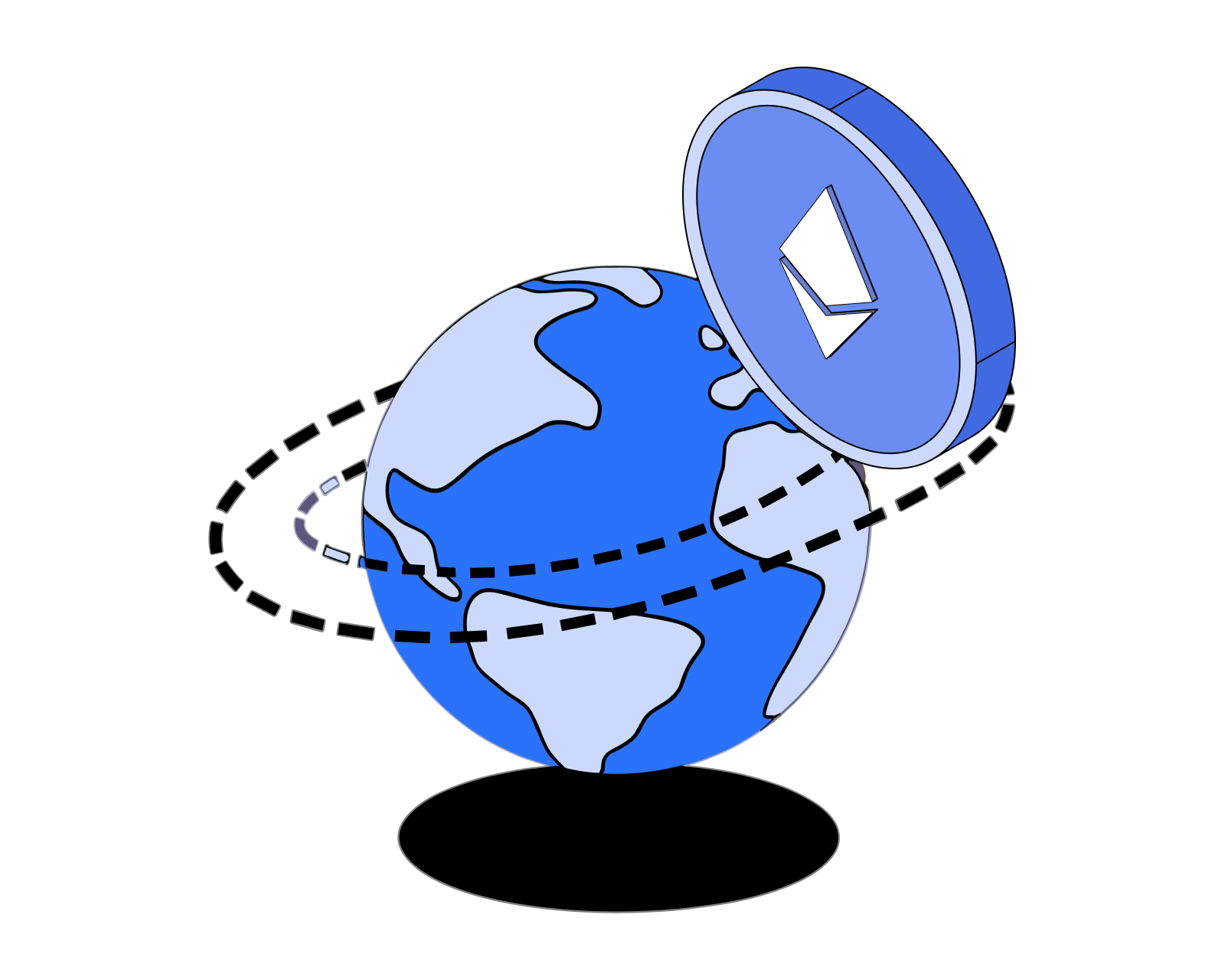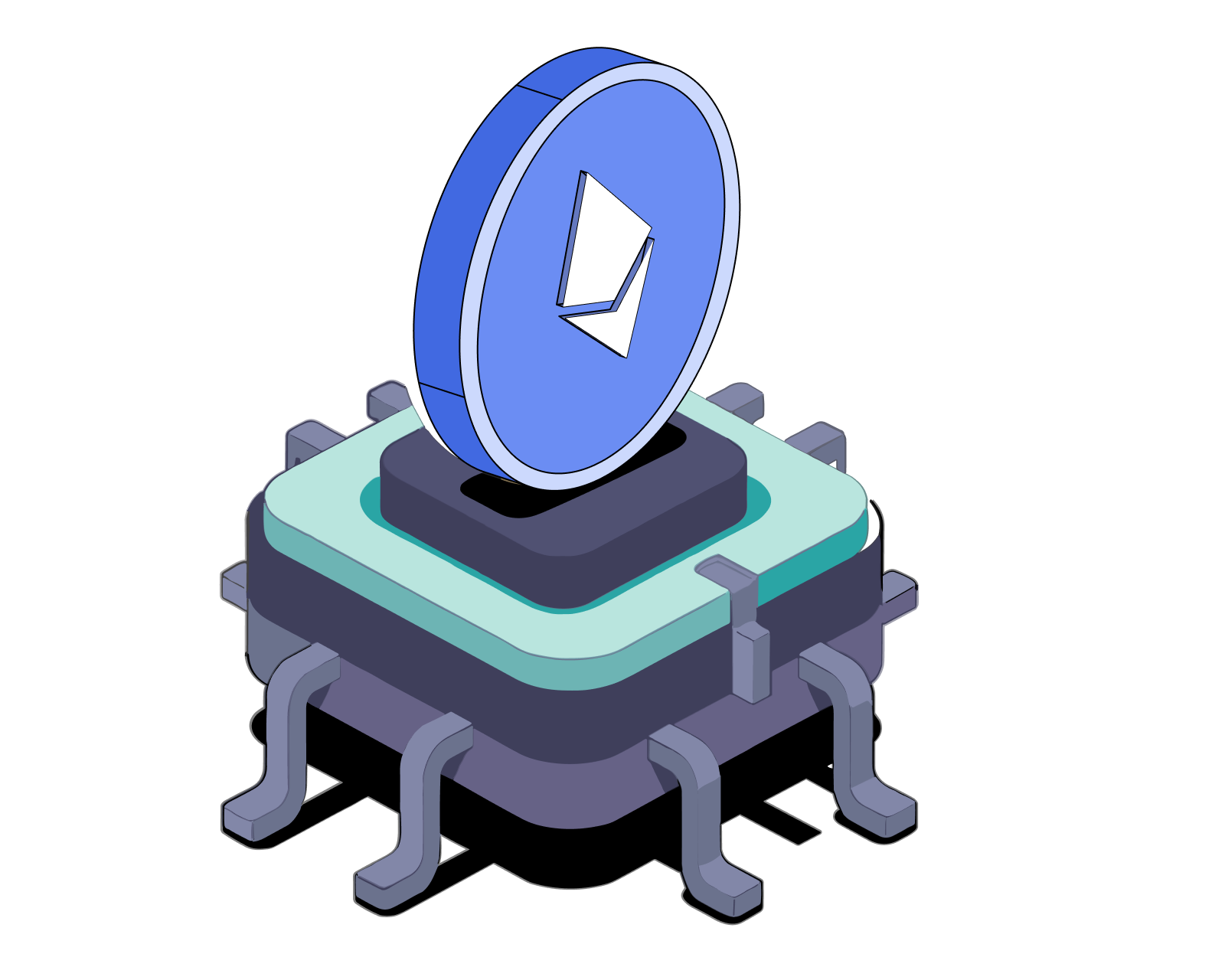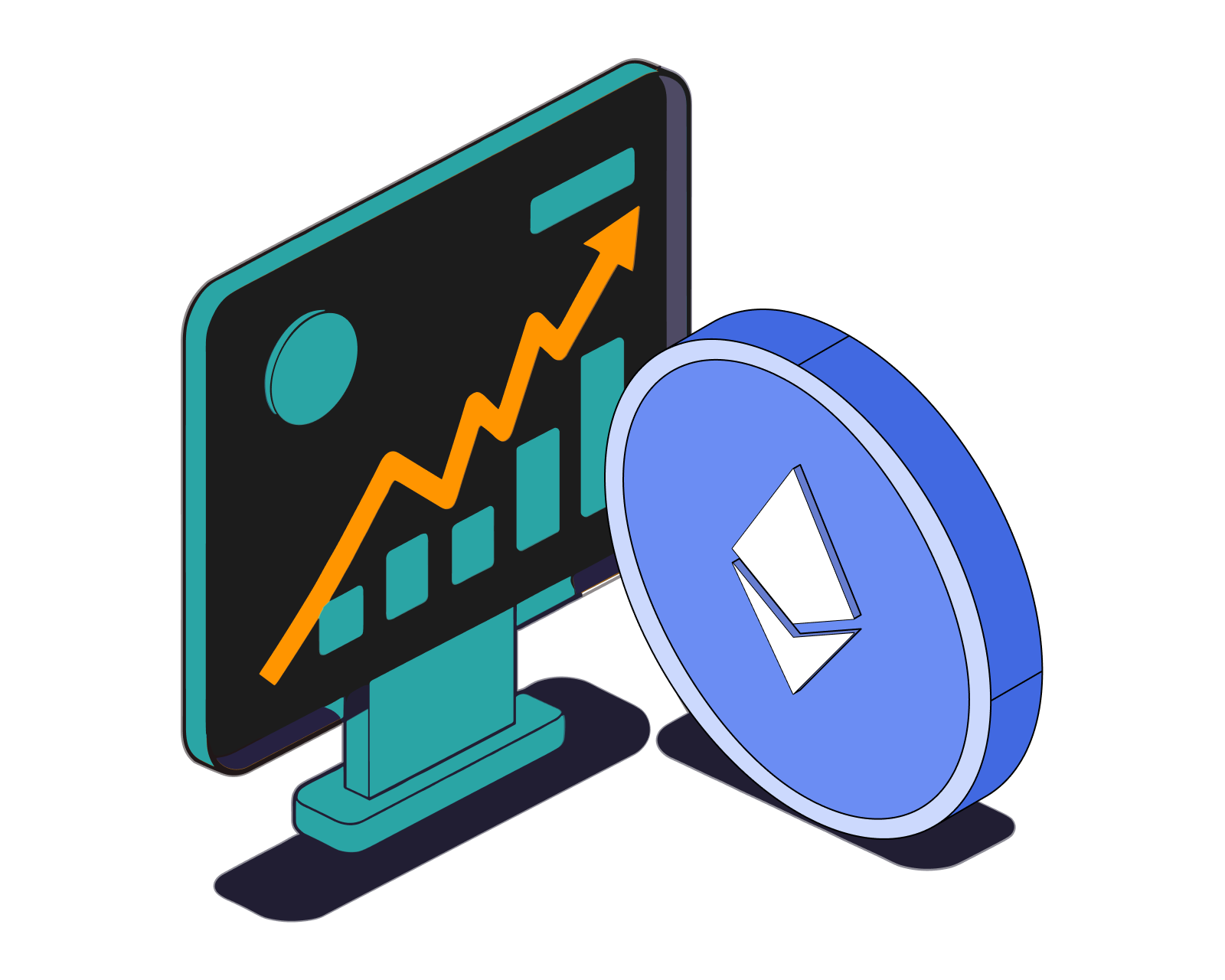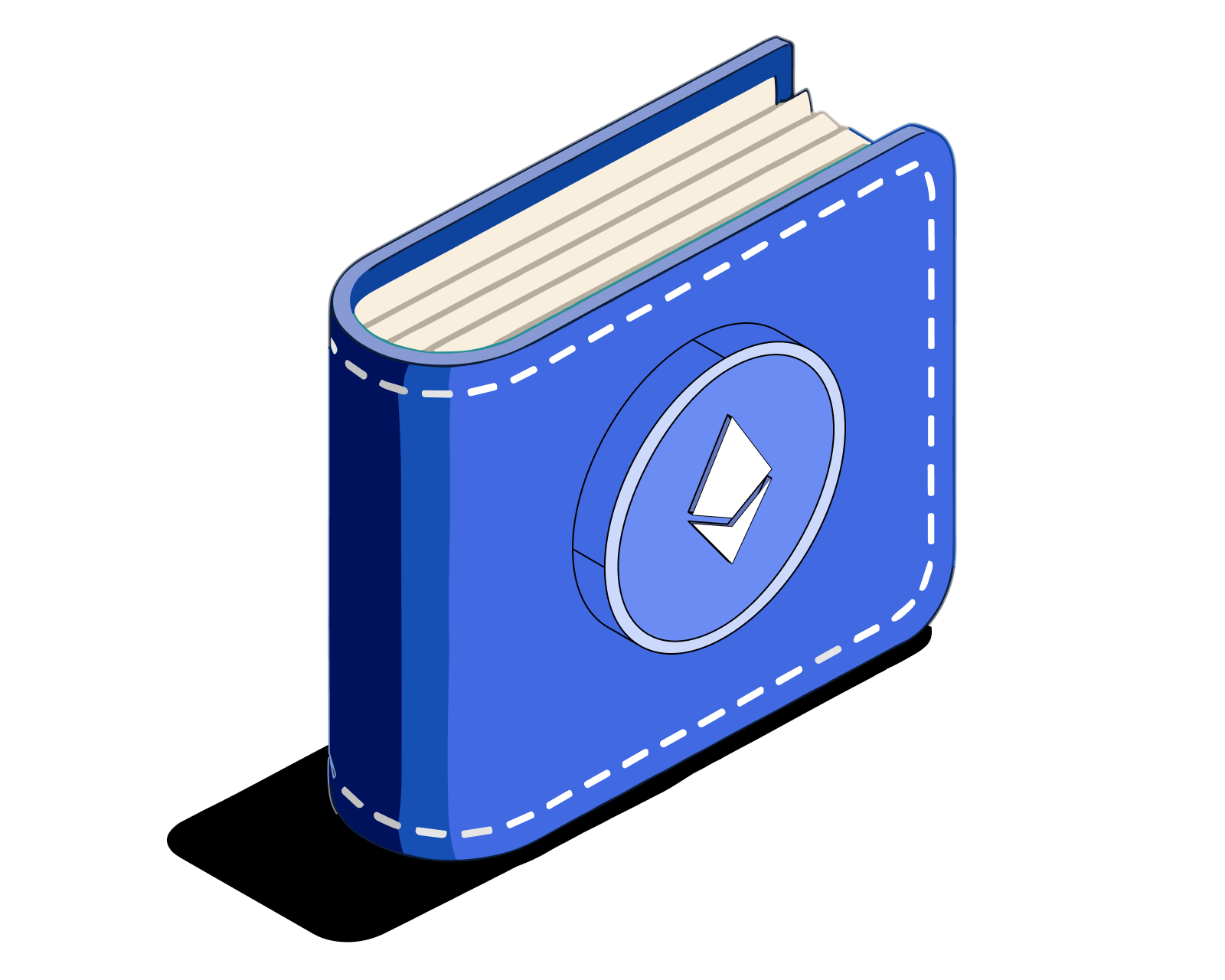What is ETH used for?

Table of Contents
Smart Contracts and Decentralized Applications (dApps)
Smart contracts are self-executing contracts with the terms of the agreement between buyer and seller being directly written into lines of code. They run on the Ethereum blockchain, automatically executing transactions and enforcing agreements when predefined conditions are met, without the need for intermediaries. This technology enables the creation of decentralized applications (dApps), which operate on a peer-to-peer network of computers rather than a single centralized server. DApps built on Ethereum can serve a wide range of purposes, from financial tools and games to complex data management systems. The use of ETH as a form of payment for executing these smart contracts ensures that developers and users can transact and interact with dApps in a secure and decentralized manner. Learn about smart contracts and how applications are built on Ethereum.
DeFi (Decentralized Finance)
Decentralized Finance, or DeFi, represents a shift from traditional, centralized financial systems to peer-to-peer finance enabled by decentralized technologies built on the Ethereum blockchain. DeFi platforms allow users to lend, borrow, trade, and earn interest on their crypto assets without relying on traditional banks or financial institutions. These services are accessible to anyone, anywhere, as long as they have access to the internet and ETH to pay for transaction fees. The openness and accessibility of DeFi could potentially democratize access to financial services, offering greater inclusivity compared to the conventional financial system. ETH plays a crucial role in this ecosystem by facilitating transactions, executing smart contracts, and serving as collateral for various DeFi protocols. Learn more about DeFi.
NFTs (Non-Fungible Tokens)
Non-Fungible Tokens (NFTs) are unique digital assets that represent ownership or proof of authenticity of a wide range of tangible and intangible items, from art and music to virtual real estate and collectibles. Unlike cryptocurrencies such as Bitcoin or even ETH, which are fungible and can be exchanged on a one-to-one basis, each NFT has a distinct value and cannot be exchanged on a like-for-like basis. Ethereum's blockchain supports the creation and trading of NFTs through its smart contract functionality, with ETH being used to buy, sell, or mint these digital assets. The NFT market has exploded in popularity, highlighting Ethereum's role in pioneering new forms of digital ownership and the monetization of digital content. Learn more about NFTs.
Staking and Ethereum 2.0
With the transition to Ethereum 2.0 and the shift from Proof of Work (PoW) to Proof of Stake (PoS), staking has become a central element of the network's security and consensus mechanism. In PoS, ETH holders can lock up a portion of their tokens as a stake in the network, essentially acting as validators who propose and validate blocks of transactions. Staking ETH not only helps secure the network but also allows stakeholders to earn rewards in proportion to their staked amount. This shift aims to reduce the network's energy consumption significantly, making Ethereum more sustainable while increasing its scalability and security. As Ethereum continues to evolve, staking becomes an attractive option for users looking to contribute to the network's security and earn rewards, thereby strengthening the ecosystem. Learn more about Ethereum 2.0.
Layer 2 Scaling Solutions
As the Ethereum network has grown in popularity, so too have the demands on its capacity, leading to higher gas fees and slower transaction times during peak periods. Layer 2 scaling solutions, such as rollups and state channels, offer a way to handle transactions off the main Ethereum blockchain (Layer 1), while still ensuring the security and decentralization of the network. These solutions allow for faster and cheaper transactions by batching or processing them on a separate layer, then recording the final state on the main blockchain. ETH remains integral to these operations, as transactions within these Layer 2 solutions often require ETH for fees or collateral. By leveraging these technologies, Ethereum aims to significantly increase its transaction throughput without sacrificing security or decentralization, making it more accessible and usable for everyday applications. Learn more about Ethereum layer-2 solutions
The Ethereum Virtual Machine (EVM)
The Ethereum Virtual Machine (EVM) is the heart of the Ethereum network, acting as a global, decentralized computing engine. The EVM interprets and executes the smart contracts written in Ethereum's programming languages, such as Solidity. It ensures that every Ethereum node runs the same instructions, maintaining the blockchain's integrity and consensus. ETH is used as "gas" to power these operations, compensating for the computational resources required to execute transactions and smart contracts. This mechanism prevents spam on the network and allocates resources efficiently. The flexibility and power of the EVM have enabled developers to build a wide array of decentralized applications, pushing the boundaries of what can be achieved with blockchain technology. Learn more about the Ethereum Virtual Machine.
Token Standards and ERC-20 Tokens
Token standards on the Ethereum blockchain, particularly the ERC-20 standard, have been instrumental in the widespread adoption of Ethereum for creating digital assets. ERC-20 defines a common list of rules that Ethereum tokens must adhere to, allowing for seamless interaction with smart contracts, decentralized applications, and other tokens. This standardization has facilitated the growth of a vibrant ecosystem of tokens serving various purposes, from representing digital currencies and assets to governance tokens that grant holders voting rights in decentralized protocols. ETH itself is used for transaction fees and gas costs when interacting with these tokens, reinforcing its position as the foundational currency of the Ethereum ecosystem. Learn more about ERC-20 tokens.
Future Developments and Upcoming Projects
The Ethereum network is continuously evolving, with a robust roadmap of future developments aimed at enhancing its scalability, security, and functionality. Upcoming projects include further improvements to the consensus layer, the introduction of more advanced sharding mechanisms, and continued development of Layer 2 scaling solutions. These initiatives promise to make Ethereum more accessible, efficient, and sustainable, potentially lowering gas fees and increasing transaction throughput. As these developments unfold, ETH will remain central to the network's operations, serving as the primary currency for transaction fees, staking, and participating in the decentralized finance (DeFi) and non-fungible token (NFT) ecosystems. The ongoing growth and innovation within the Ethereum community highlight its commitment to maintaining its position as a leading platform for decentralized applications and smart contracts.
Related guides
Start from here →

What is Ethereum?
Understand Ethereum's key characteristics.

How to buy ETH
Learn how to buy ETH and hold it securely in a digital wallet you control.
Read this article →
How to buy ETH
Learn how to buy ETH and hold it securely in a digital wallet you control.

What's a smart contract?
Get the basics on the "software" that runs on decentralized networks.
Read this article →
What's a smart contract?
Get the basics on the "software" that runs on decentralized networks.

What is DeFi?
Learn what makes decentralized finance (DeFi) apps work and how they compare to traditional financial products.
Read this article →
What is DeFi?
Learn what makes decentralized finance (DeFi) apps work and how they compare to traditional financial products.

What is Ethereum's monetary policy?
Learn about the issuance rate of ETH and how it is governed.
Read this article →
What is Ethereum's monetary policy?
Learn about the issuance rate of ETH and how it is governed.

How to create an Ethereum wallet
Creating an Ethereum wallet is as easy as installing software on your mobile device or laptop/desktop.
Read this article →
How to create an Ethereum wallet
Creating an Ethereum wallet is as easy as installing software on your mobile device or laptop/desktop.
STAY AHEAD IN CRYPTO
Stay ahead in crypto with our weekly newsletter delivering the insights that matter most
Weekly crypto news, curated for you
Actionable insights and educational tips
Updates on products fueling economic freedom
No spam. Unsubscribe anytime.



Start investing safely with the Bitcoin.com Wallet
Over wallets created so far
Everything you need to buy, sell, trade, and invest your Bitcoin and cryptocurrency securely

© 2025 Saint Bitts LLC Bitcoin.com. All rights reserved


